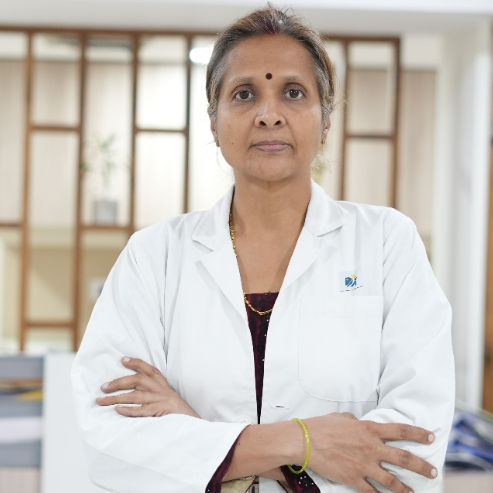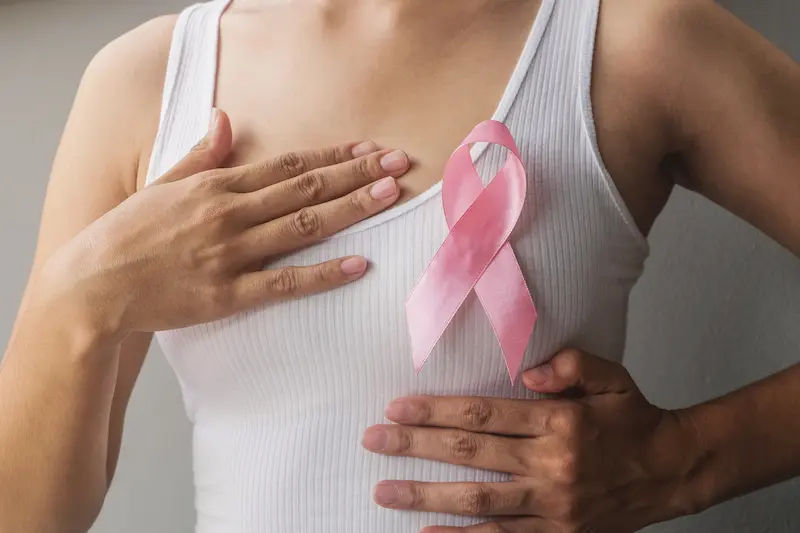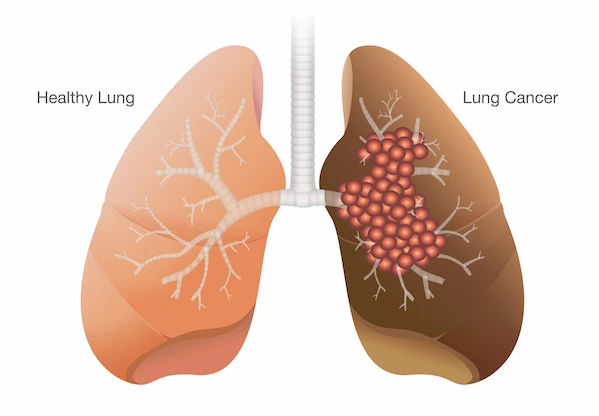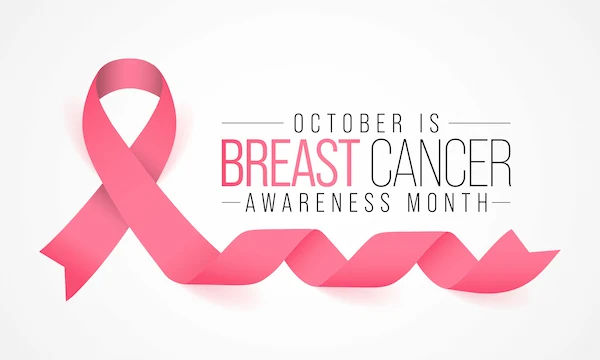Signs Of Breast Cancer Know
Know about breast cancer, the most common signs, the less common signs, normal versus abnormal and the procedure for self-breast examination.

Written by Dr. Mohammed Kamran
Reviewed by Dr. Shaik Abdul Kalam MD (Physician)
Last updated on 7th Oct, 2025

Introduction
Breast cancer is one of the most common cancers affecting women worldwide, but here's the crucial fact: early detection dramatically improves the chances of successful treatment. Knowing the signs of breast cancer is your first and most powerful line of defense. This guide will walk you through the comprehensive list of warning signs, from the most common to the less obvious. Our goal is not to cause alarm but to empower you with knowledge. Understanding these changes in your body ensures you can seek timely medical advice, turning fear into proactive action. Remember, most breast changes are not cancer, but every change deserves a professional evaluation. Let's explore what you need to watch for.
The Most Common Sign: A New Lump or Mass
The most widely recognised sign of breast cancer is the discovery of a new lump or mass. It's important to note that not all lumps are cancerous; in fact, many are benign conditions like cysts or fibroadenomas. However, any new, persistent lump warrants a doctor's attention.
The key characteristic is that a cancerous lump often feels different from the surrounding breast tissue. It may be hard, immovable, and have irregular edges. However, some cancers can be tender, soft, or rounded. This variability is why professional assessment is non-negotiable.
Consult a Top Gynaecologist for Personalised Advice
What Does a Cancerous Lump Feel Like?
While only a biopsy can confirm cancer, there are general descriptors. A malignant mass is often:
- Painless: Though not a rule, many breast cancer lumps are not painful initially.
- Firm or Hard: It may feel like a rock or a frozen pea embedded in the breast tissue.
- Irregular in Shape: Instead of being perfectly round, the edges may be jagged or poorly defined.
- Immovable: You won't be able to move it around easily under the skin; it feels anchored.
Visual Changes on the Breast Skin
Breast cancer can cause noticeable changes to the skin's texture and appearance. These signs are particularly important
because they can be indicators of specific types of breast cancer, such as inflammatory breast cancer.
Dimpling or Puckering (Peau d'Orange)
One of the most telling signs is skin that begins to look like the dimpled skin of an orange, a condition called peau d'orange. This occurs when cancer cells block lymphatic vessels in the skin, causing fluid buildup and swelling. You might also notice puckering or dimpling that looks like a small dent, especially when you raise your arms. This happens when a tumour pulls the skin inward.
Redness, Rash, or Darkening
Unexplained redness, scaling, or thickening of the skin on the breast or nipple can be a warning sign. While it's easy to mistake this for a simple skin infection or eczema, if it persists and doesn't respond to topical creams, it could be a symptom of inflammatory breast cancer. This rare but aggressive form of cancer often does not present with a distinct lump but with these skin changes.
Nipple and Areola Changes
Your nipples can also provide critical clues. Any sudden change in their appearance or behaviour should be noted.
Nipple Inversion or Retraction
If a nipple that was previously pointing outward suddenly flattens or turns inward (inversion), it's a significant change.
This can happen when a tumour deep within the breast pulls the nipple tissue inward. It's different from having naturally
inverted nipples your whole life; the key is the change.
Nipple Discharge
Spontaneous discharge from one nipple, especially if it's clear, bloody, or another colour (but not milky), can be a cause
for concern. Discharge that occurs without squeezing the nipple is particularly noteworthy. While many causes of
discharge are benign (like a papilloma or infection), they require medical evaluation to rule out underlying cancer.
Less Common but Important Signs
Beyond lumps and skin changes, other symptoms can signal breast cancer. These are often overlooked because they are
less specific.
Swelling in the Breast or Armpit
Swelling in all or part of the breast, even if no distinct lump is felt, can be a sign. Pay equal attention to swelling or a
lump in the armpit area. This could indicate that breast cancer has spread to the lymph nodes under the arm, which is
often one of the first places it travels.
Persistent Breast or Nipple Pain
Breast pain is very common and is usually linked to hormonal changes (cyclical mastalgia) or benign cysts. However, pain that is localised to one spot and persists throughout your menstrual cycle should not be ignored. While breast pain is rarely the primary symptom of cancer, it can be, especially in more advanced stages.
Understanding What's Normal vs. What's Not
It's completely normal for breasts to feel lumpy and tender before your period due to hormonal fluctuations. The key is
to know what is normal for you. Benign breast conditions are very common. Fibroadenomas are smooth, solid, non-cancerous lumps common in young women. Cysts are fluid-filled sacs that can feel tender and often change size with your cycle.
Benign (Non-Cancerous) Breast Conditions
Conditions like mastitis (a breast infection) can cause redness, swelling, and pain, mimicking signs of inflammatory
breast cancer. The difference often lies in response to treatment; mastitis typically improves with antibiotics. If symptoms don't resolve, further investigation for cancer is essential.
When and How to Perform a Breast Self-Exam
While formal monthly self-exams are no longer universally recommended as a strict mandate, being familiar with your breasts through periodic awareness is valuable. There's no right or wrong way. The goal is to notice changes. You can do this in the shower, in front of a mirror, or lying down. Look for visual changes like dimpling or redness. Feel your breast tissue using the pads of your fingers in a circular pattern, checking all the way to your collarbone and into the armpit.
The Critical Next Step: When to See a Doctor
If you notice any of the signs discussed—a new lump, skin changes, nipple changes, or persistent pain—the most important step is to consult a healthcare professional. Do not wait. Early evaluation is the best defense.
If you notice any persistent changes, consult a doctor online with Apollo24|7 for an initial consultation. They can assess your symptoms and advise if you need a physical examination or diagnostic tests like a mammogram. Prompt action can provide peace of mind or ensure early intervention if needed.
Conclusion
Understanding the signs of breast cancer empowers you to take an active role in your health. While this information might seem daunting, remember that knowledge is power, not a source of fear. The vast majority of breast changes turn out to be non-cancerous. However, the possibility that a symptom could be an early warning sign of breast cancer makes vigilance essential. Your body often sends signals, and learning to recognise them is a crucial part of self-care. Don't hesitate to act if something feels off. Schedule that appointment, ask questions, and advocate for your health. Early detection saves lives, and it starts with you being aware of these potential signs. If your condition does not improve after trying these methods, book a physical visit to a doctor with Apollo24|7 for a thorough clinical breast exam and peace of mind.
Consult a Top Gynaecologist for Personalised Advice
Consult a Top Gynaecologist for Personalised Advice

Dr. Revathi S Rajan
Obstetrician and Gynaecologist
24 Years • MBBS, DGO, DNB.FFMM
Bengaluru
Apollo Clinic, JP nagar, Bengaluru

Dr. Rupam Manna
Radiation Specialist Oncologist
4 Years • MBBS MD(RADIO THERAPY)
Barasat
Diab-Eat-Ease, Barasat

Dr. Sreeparna Roy
Obstetrician and Gynaecologist
8 Years • MBBS , MS (OBSTETRICS & GYNAECOLOGY), Fellowship in Infertility, Endoscopy & Ultrasonography), Fellowship in Laparoscopy & Hysteroscopy,DRM
Kolkata
Dr Utsa Basu Clinic, Kolkata
Dr. Navin Srinivasan
Gynaecological Oncologist
9 Years • MBBS, MS DNB(OBS-GYNAE), MCH (GYNAE ONCOLOGY)
Bengaluru
Apollo Clinic Mahadevapura, Bengaluru

Dr Bhawna Garg
Gynaecological Oncologist
26 Years • MBBS, MS, (PGI MS ROHTAK) FELLOWSHIP GYNECOLOGY ONCOLOGY, (CANCER INSTITUTE CHENNAI)
Delhi
Apollo Hospitals Indraprastha, Delhi
Consult a Top Gynaecologist for Personalised Advice

Dr. Revathi S Rajan
Obstetrician and Gynaecologist
24 Years • MBBS, DGO, DNB.FFMM
Bengaluru
Apollo Clinic, JP nagar, Bengaluru

Dr. Rupam Manna
Radiation Specialist Oncologist
4 Years • MBBS MD(RADIO THERAPY)
Barasat
Diab-Eat-Ease, Barasat

Dr. Sreeparna Roy
Obstetrician and Gynaecologist
8 Years • MBBS , MS (OBSTETRICS & GYNAECOLOGY), Fellowship in Infertility, Endoscopy & Ultrasonography), Fellowship in Laparoscopy & Hysteroscopy,DRM
Kolkata
Dr Utsa Basu Clinic, Kolkata
Dr. Navin Srinivasan
Gynaecological Oncologist
9 Years • MBBS, MS DNB(OBS-GYNAE), MCH (GYNAE ONCOLOGY)
Bengaluru
Apollo Clinic Mahadevapura, Bengaluru

Dr Bhawna Garg
Gynaecological Oncologist
26 Years • MBBS, MS, (PGI MS ROHTAK) FELLOWSHIP GYNECOLOGY ONCOLOGY, (CANCER INSTITUTE CHENNAI)
Delhi
Apollo Hospitals Indraprastha, Delhi
More articles from Breast Cancer
Frequently Asked Questions
1. Can breast cancer be painless?
Yes, absolutely. In its early stages, breast cancer is often painless. The most common sign is a painless lump. This is why regular screening and awareness of other symptoms are so important, as pain is usually a later symptom.
2. What are the early signs of inflammatory breast cancer?
Inflammatory breast cancer (IBC) symptoms are distinct and often don't involve a lump. Look for rapid swelling, redness covering a third or more of the breast, peau d'orange skin, and a heavy, aching feeling. These symptoms can develop quickly over a few weeks.
3. How can I tell the difference between a cancerous lump and a cyst?
It's very difficult to self-diagnose. Generally, a cyst may feel tender and smooth and can change size with your menstrual cycle. A cancerous lump is more likely to be hard, immovable, and have irregular borders. A doctor will use an ultrasound to determine if a lump is fluid-filled (cyst) or solid (potentially a tumour).
4. Is nipple discharge always a sign of cancer?
No. Nipple discharge is common and often benign, especially if it comes from both breasts and is milky or greenish. However, spontaneous, persistent discharge from one nipple that is clear or bloody should be evaluated by a doctor immediately.
5. What should I do if I find a lump during a self-exam?
First, try not to panic. Note when you found it and its characteristics. Then, schedule an appointment with your doctor promptly. They will perform a clinical breast exam and may order imaging tests like a mammogram or ultrasound to get a clearer picture.




